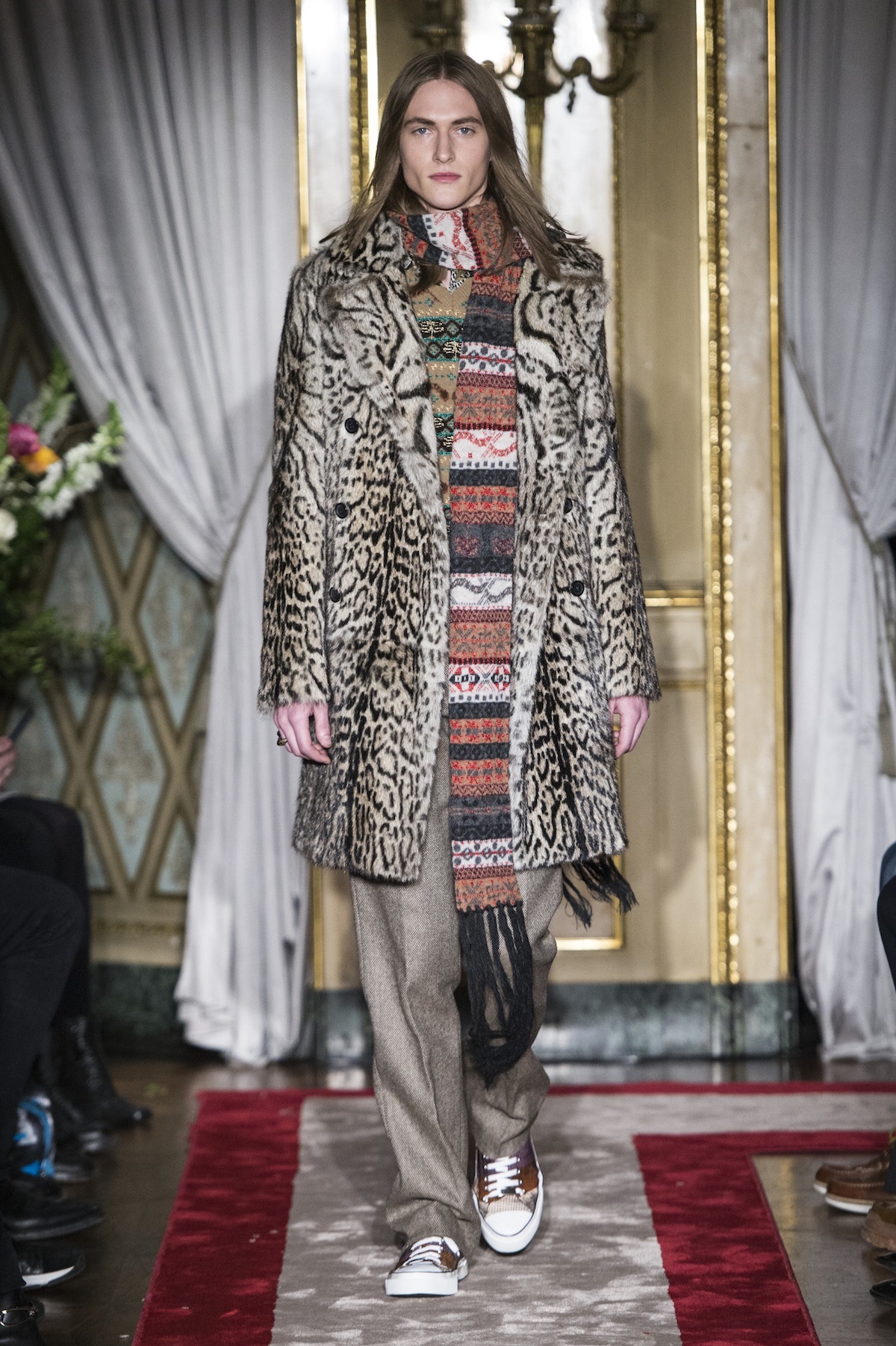In the revival saga of Italian fashion that’s become a reality after Gucci, Pucci and Cavalli got new designers, we shouldn’t forget that it all started with a men’s collection. Exactly a year ago now, a then-unknown Alessandro Michele received a standing ovation for his androgynous Gucci collection, which set off a wave of excitement in Milan where new designers have been re-embracing and redefining Italy’s dynastical houses ever since. Many of us loved Peter Dundas’ first women’s collection for Roberto Cavalli in September, but after what happened on his runway last night, on the first evening of Milan men’s shows, the womenswear seemed like a mere rehearsal.
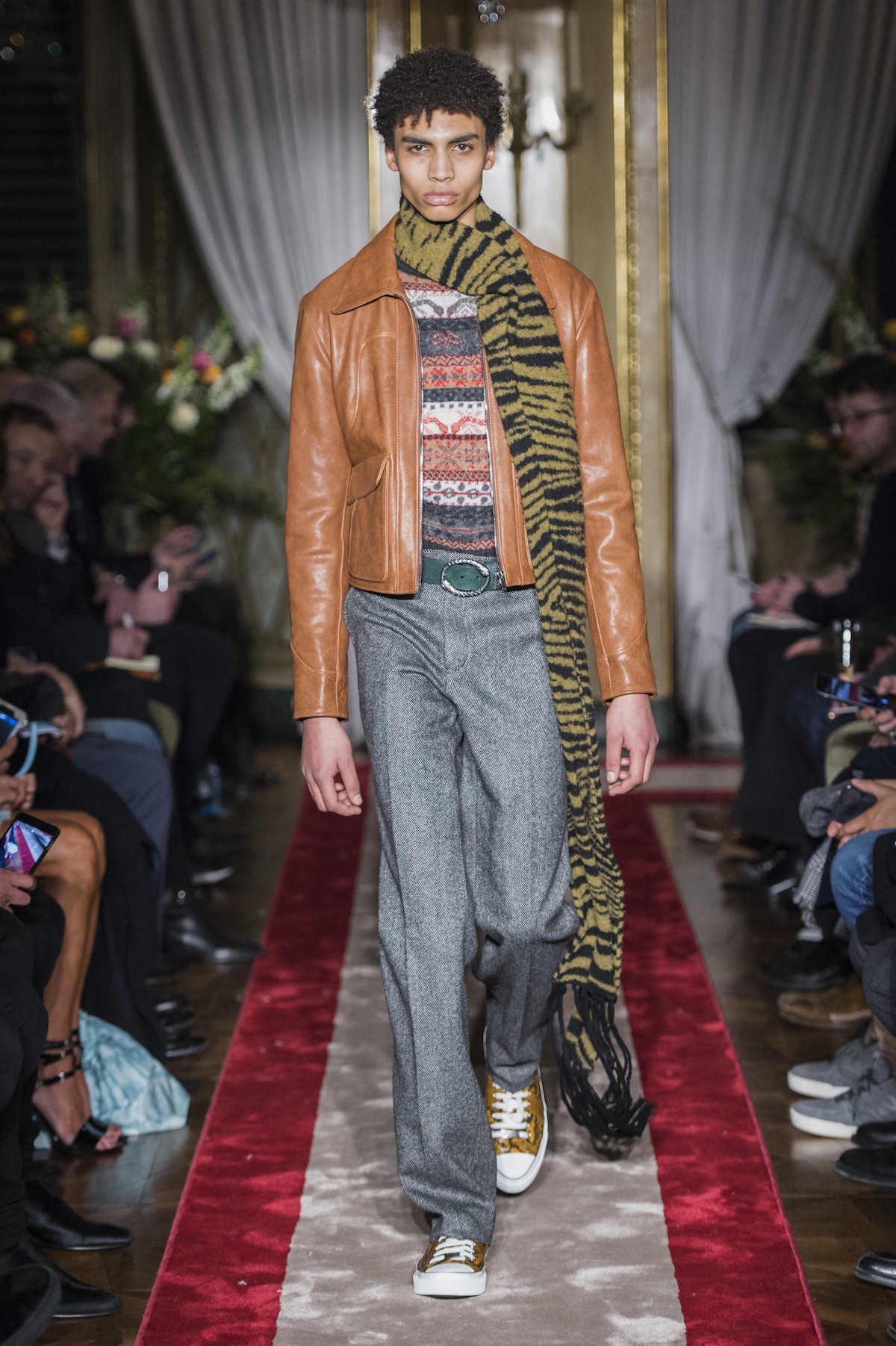
If there wasn’t a standing ovation at this Cavalli men’s show, it was only because the baroque surroundings of Palazzo Crespi – the majestic private home of the Crespi family – had us all on our best behaviour. From exit one – a skinny leopard coat worn over a fair-isle knit with flared trousers and All-Stars – parallels could be drawn to Michele’s aesthetic, but what we’ve seen there over the past year isn’t exclusive to Gucci. It’s a moment, an Italian fashion moment that owes more than a little to the nature-centric, free-spirited playboy heritage of Roberto Cavalli himself.
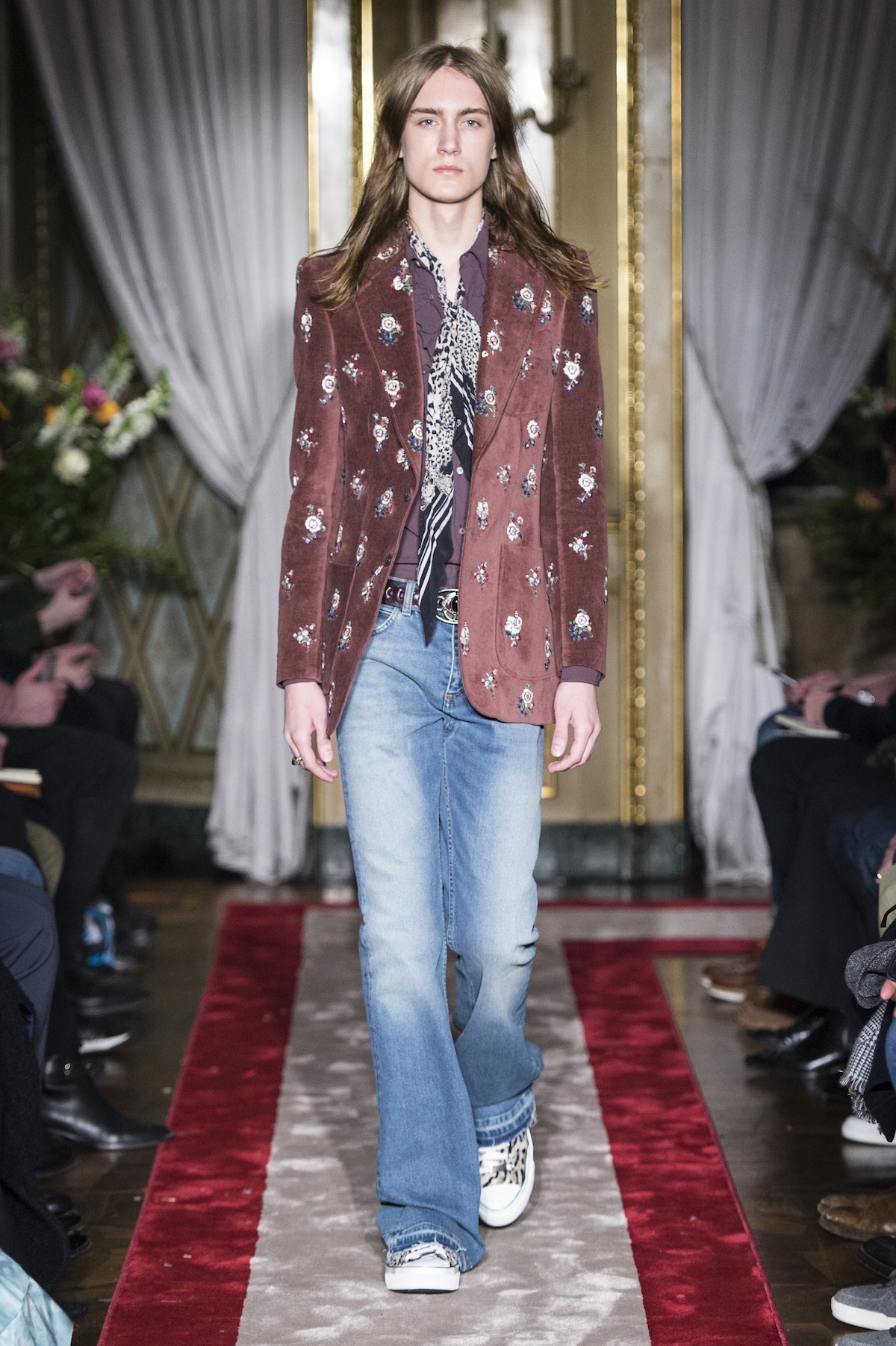
“Cavalli is about freedom and not feeling restrained,” Dundas told i-D backstage, pretty much summing up the philosophy of the gender-neutral cultural movement that’s been counterparting the fashion revolution in Milan lately. And that’s why it’s in menswear that fashion’s transformations are currently taking off. Half a century after David Bowie began to break down the borders between masculinity and femininity, it’s as if men – the ones outside of fashion shows, mind you – are finally getting used to the idea of gender fluidity. “I think of humans as sensual and I think my Cavalli man has a sensuality as well, which means he can feel very comfortable wearing an embroidered jacket, but he does it with a pair of old flares,” Dundas explained.
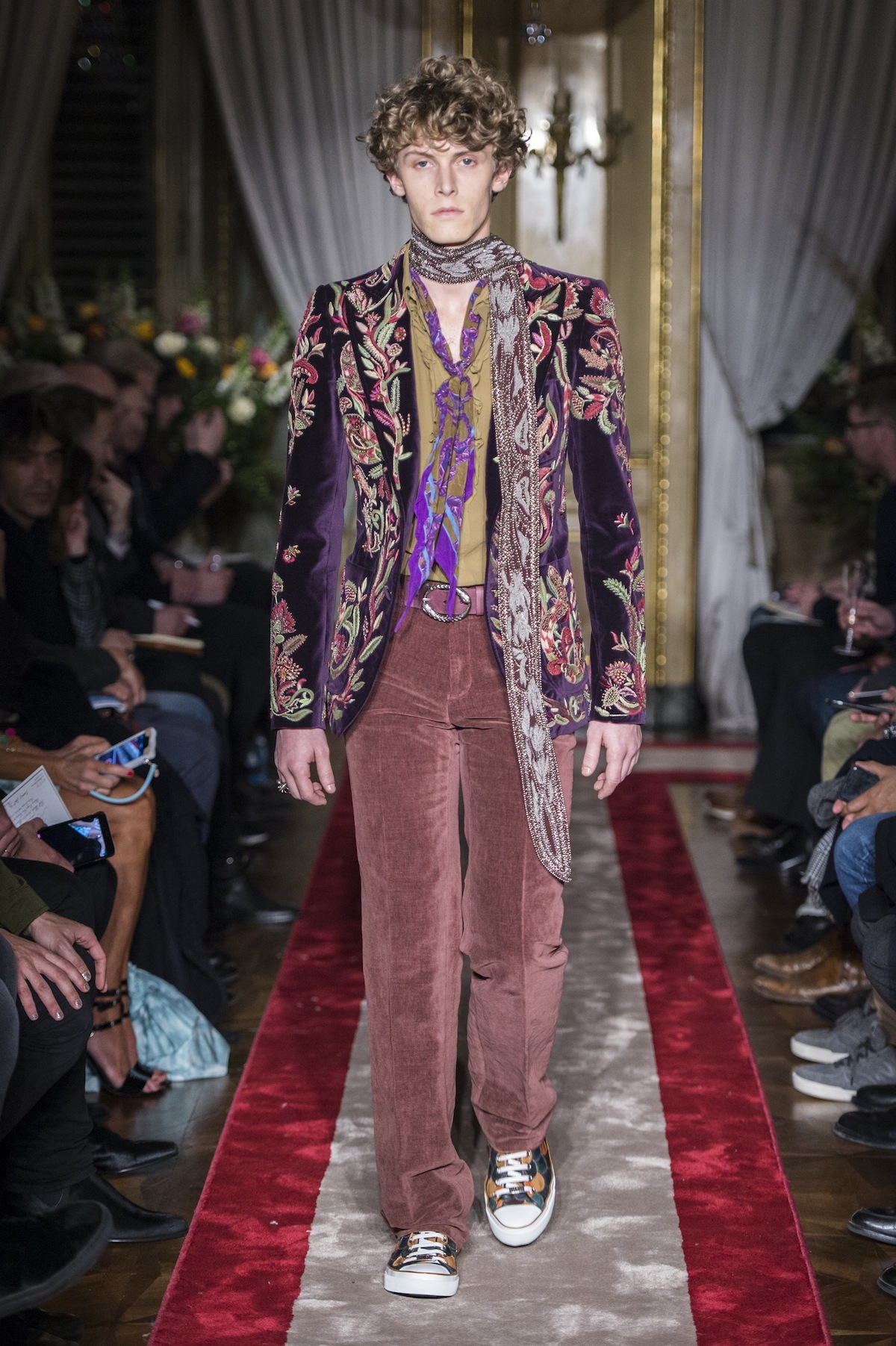
“He can feel comfortable wearing a printed blouse – and I say ‘blouse’ rather than ‘shirt’ – all because it makes him feel good.” What he said was like a rulebook to the masculinity of the 2010s, because while you could argue we could now wipe out those gender definitions – masculine and feminine – altogether, the Cavalli collection wasn’t purely androgynous but simply an enhanced take on that free-spirited Cavalli masculinity, which was already making great business for the brand’s rock ‘n’ roll menswear before Dundas joined the house.
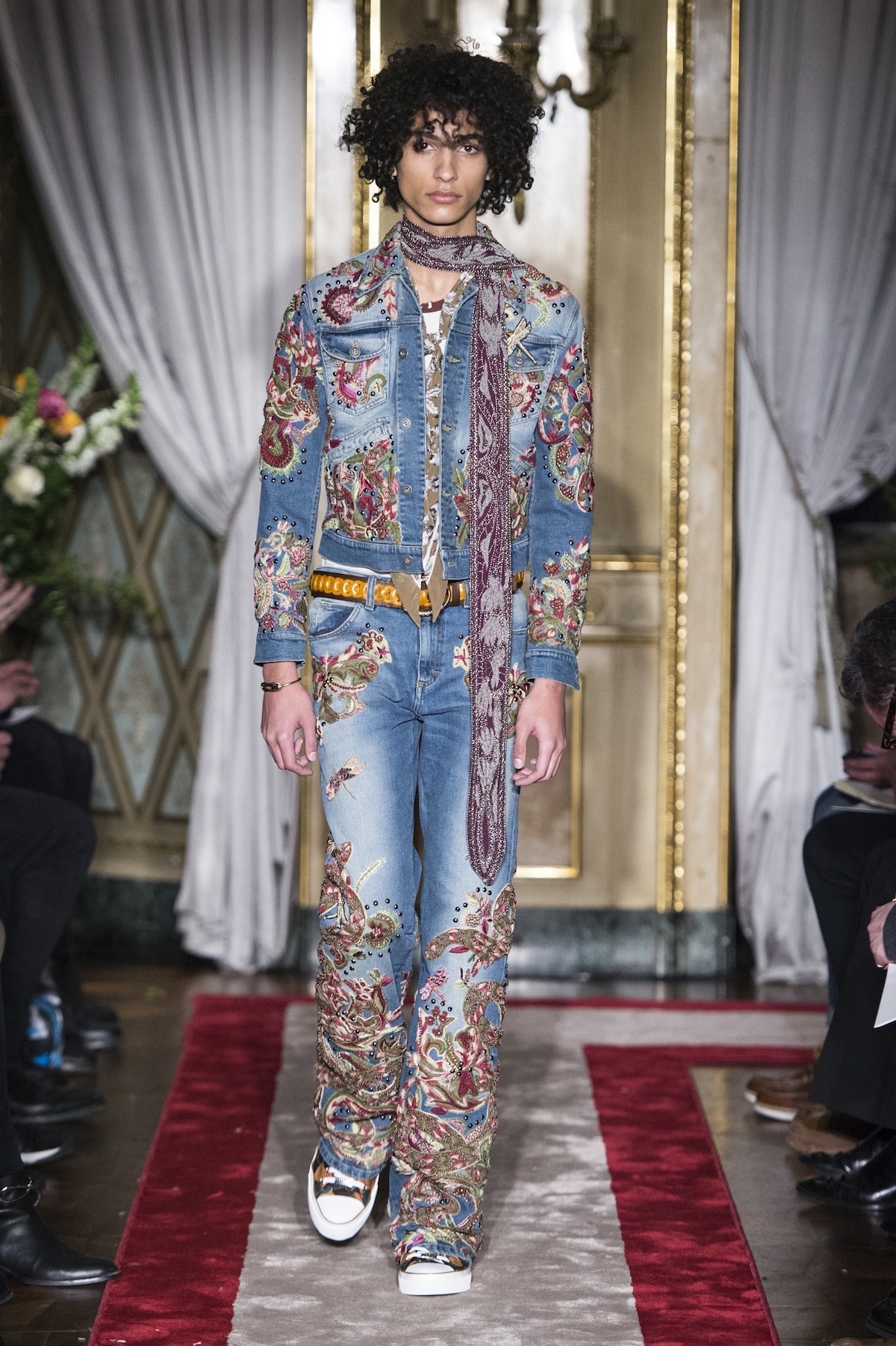
“It’s a confident masculinity that’s not afraid of maybe exploring a softer side as well,” he said, standing in front of a look board displaying the embroidered denim, fur coats, and louche pyjamas he’d just shown. But more than anything – and very much in keeping with what’s happening in men’s wardrobes right now – Dundas’ Cavalli masculinity was exploring an opulence, the precious fragility of which instantly injects masculinity with a certain softness—just look at the princely court attire that would have roamed those gilded ballrooms of Palazzo Crespi in the late 18th century.
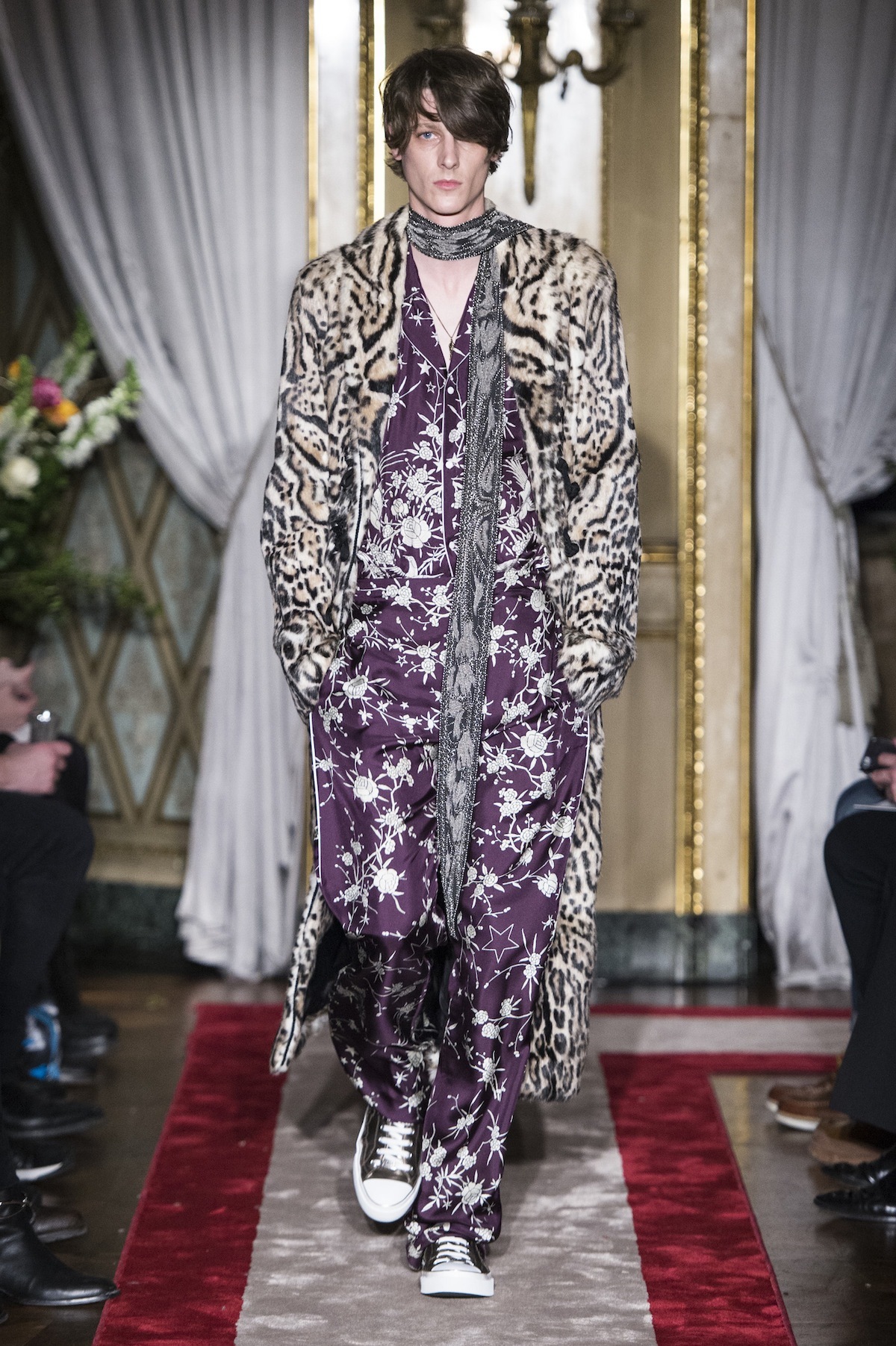
Back then, before the idea of the soft man had ever been considered, men’s clothes were sharing the fabrics and embellishments of the women’s wardrobe, and it was all thanks to a pursuit of opulence, which is now hitting menswear all over again. “I hope it is a moment, but I just had to do what I knew how to do with this one,” Dundas smiled after his men’s runway debut, which even had the title Real Opulence. “Doing something I’m a little bit of a rookie in, the only thing I knew how to do was what I feel for and have fun with it.”
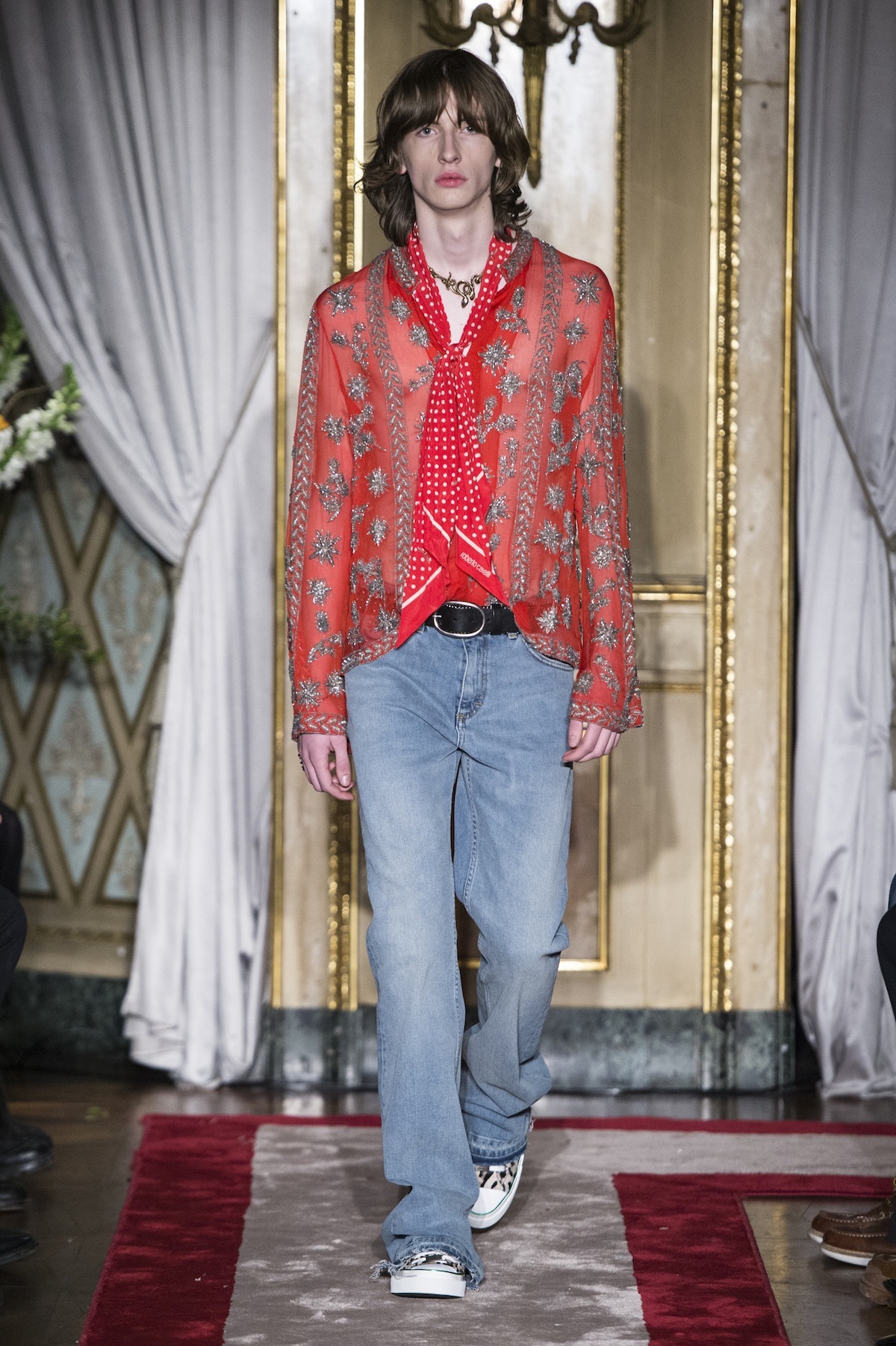
Above all, the Cavalli collection came off strikingly natural. There was an innateness about the aesthetic that seemed as instinctive to Dundas as it did to those watching it unfold. When the Ports show at Palazzo Reale opened with a performance by a scantily clad Sergei Polunin – ballet’s biggest star right now – there was a similar sense of approval in the room. In his show notes, Milan Vukmirovic highlighted Polunin’s apperance in David LaChapelle’s second video for Hozier’s Take Me to Church and the sentiment of the song: “the right to be different and the fight for the freedom to think, create and love”. Vukmirovic’s ethnic sportswear captured the all-important opulence of menswear right now, and the sense of poetry flowing through the veins of a changed Milan.
